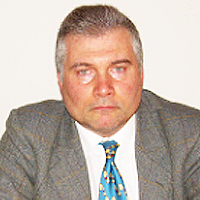A Novel Strategy to Improve Radiotherapy Effectiveness: First-in-Human MR-guided Focused Ultrasound-Stimulated Microbubbles (MRgFUS+MB) Radiation Enhancement Treatment
Published on: 24th August, 2023
Background and aim: Preclinical in vitro and in vivo experiments suggest that radiation-induced tumour cell death can be enhanced 10- to 40-fold when combined with focused-ultrasound (FUS)-stimulated microbubbles (MB). The acoustic exposure of MB in the tumour volume causes vasculature perturbation, activation of the acid sphingomyelinase (ASMase) ceramide pathway, and resultant endothelial cell apoptosis. When the tumour is subsequently treated with radiation, there is increased endothelial cell death and anoxic tumour killing. Here we describe a first-in-human experience treating patients with magnetic resonance (MR)-guided FUS-stimulated MB (MRgFUS+MB) radiation enhancement.Case presentation: A head and neck cancer patient with recurrent disease underwent radiotherapy for 5 separate sites of locoregional disease followed by systemic therapy. The first consisted of a course of 45 Gy in 5 fractions alone, the second of 30 Gy in 5 fractions with hyperthermia, and the three others of 20-30 Gy in 5 fractions along with MRgFUS+MB treatment. The treatment methodology used an MR-coupled FUS-device operating at 500 KHz and 540 kPa peak negative pressure with an insonification time of 750 ms spread over 5 minutes to stimulate intravenously administered MB within tumour target. All sites treated with stimulated MB had a complete radiological response, and subsequently, the patient’s other cutaneous metastatic disease disappeared. The patient has been under surveillance for over two years without active treatment or disease progression.Discussion: MRgFUS+MB was well-tolerated with no reported treatment-related adverse events, which can be attributed to the capability of FUS to selectively stimulate MB within the tumour volume while sparing the surrounding normal tissue. Sustained local control at all target sites aligns with earlier preclinical findings suggesting the radiation enhancement potential of FUS+MB.Conclusion: MRgFUS+MB represents a novel and promising therapy for enhancing radiation efficacy and improving therapeutic index with potential improvements in disease control.
Acute Inflammatory Reaction After Radiotherapy to Bilateral Orbital Metastasis from Melanoma
Published on: 15th September, 2023
Orbital melanoma is a subtype of periocular melanoma that can present from primary, secondary (arising from local invasion), or metastatic disease [1]. Melanoma metastasis to the orbit is rare with the majority of metastases occurring in subcutaneous tissue, nonregional lymph nodes, lungs, liver, brain, and bone [2]. Despite melanoma being relatively radioresistant, radiation therapy can be considered in an adjuvant or palliative setting [3]. In the palliative setting specifically, radiation therapy is highly effective in alleviating symptoms due to mass effect [3]. However, significant ocular and orbital complications may occur as a direct result of radiation therapy.
Exophthalmos Revealing a Spheno Temporo Orbital Meningioma
Published on: 18th June, 2024
Intracranial meningiomas are usually non-cancerous tumors that develop from arachnoid cells in the meningeal envelope. However, there are rare forms called intraosseous meningiomas, which present unique challenges for diagnosis and treatment. In this report, we describe a rare case of a giant sphenotemporal meningioma in a 72-year-old male with diabetes. The patient experienced progressive exophthalmos and visual impairment over a period of five months. Radiological imaging confirmed the diagnosis, showing extensive infiltration into the infra-temporal region. Histopathological examination confirmed a plaque-type meningothelial meningioma. The patient underwent surgical management, which involved maxillofacial surgery. Intraosseous meningiomas are rare but are increasingly being recognized, accounting for about two percent of all meningiomas. The spheno-orbital region is a common site for these tumors. Histologically, there are various subtypes, with meningothelial meningioma being the most common. The differential diagnosis includes Paget’s disease and osteomas. The optimal treatment approach involves extensive surgical resection, followed by adjuvant radiotherapy for any remaining or symptomatic tumors. The prognosis depends on the extent of resection and tumor progression, underscoring the importance of regular monitoring. Early intervention is crucial to preserve visual function and achieve favorable outcomes.
MRI-based Tumor Habitat Analysis for Treatment Evaluation of Radiotherapy on Esophageal Cancer
Published on: 24th June, 2024
Introduction: We aim to evaluate the performance of pre-treatment MRI-based habitat imaging to segment tumor micro-environment and its potential to identify patients with esophageal cancer who can achieve pathological complete response (pCR) after neoadjuvant chemoradiotherapy (nCRT).Material and methods: A total of 18 patients with locally advanced esophageal cancer (LAEC) were recruited into this retrospective study. All patients underwent MRI before nCRT and surgery using a 3.0 T scanner (Ingenia 3.0 CX, Philips Healthcare). A series of MR sequences including T2-weighted (T2), diffusion-weighted imaging (DWI), and Contrast Enhance-T1 weighted (CE-T1) were performed. A clustering algorithm using a two-stage hierarchical approach groups MRI voxels into separate clusters based on their similarity. The t-test and receiver operating characteristic (ROC) analysis were used to evaluate the predictive effect of pCR on habitat imaging results. Cross-validation of 18 folds is used to test the accuracy of predictions.Results: A total of 9 habitats were identified based on structural and physiologic features. The predictive performance of habitat imaging based on these habitat volume fractions (VFs) was evaluated. Students’ t-tests identified 2 habitats as good classifiers for pCR and non-pCR patients. ROC analysis shows that the best classifier had the highest AUC (0.82) with an average prediction accuracy of 77.78%.Conclusion: We demonstrate that MRI-based tumor habitat imaging has great potential for predicting treatment response in LAEC. Spatialized habitat imaging results can also be used to identify tumor non-responsive sub-regions for the design of focused boost treatment to potentially improve nCRT efficacy.
A Rare Case Report: Spinal Metastasis of Anaplastic Pleomorphic Xanthoastrocytoma
Published on: 27th January, 2025
Anaplastic Pleomorphic Xanthoastrocytoma is a very rare tumor of the Central Nervous System (CNS). BRAFV600E mutation is a common mutation in pleomorphic xanthoastrocytoma. We present a 52-year-old male patient who underwent total resection due to a temporal lobe mass. The primary tumor in the temporal lobe was given postoperative radiotherapy. During follow-up, genetically and histologically proven metastasis was detected in the paraspinal region. The adjuvant RT was given to metastasis after surgery. The patient, who used the combination of dabrafenib and trametinib after recurrence, is being monitored in remission.
GELS as Pharmaceutical Form in Hospital Galenic Practice: Chemico-physical and Pharmaceutical Aspects
Published on: 10th February, 2025
This work aims to describe the chemical-physical properties of various GELS used as galenic forms in hospital pharmacy practice. After an overview of the excipients and method used three preparations are reported. LAT GEL is used as an anesthetic in an emergency (pediatry ) in treating little Traumatic lacerations of the skin and scalp, calcium gel is used as an antidote for fluoride acid burns, and Lidocaine viscose 2% oral gel is used in some pathological conditions like severe esophagitis in onco - hematological patients after radiotherapy or chemotherapy. The galenic role in the situation of some drug shortages was also analyzed.
















